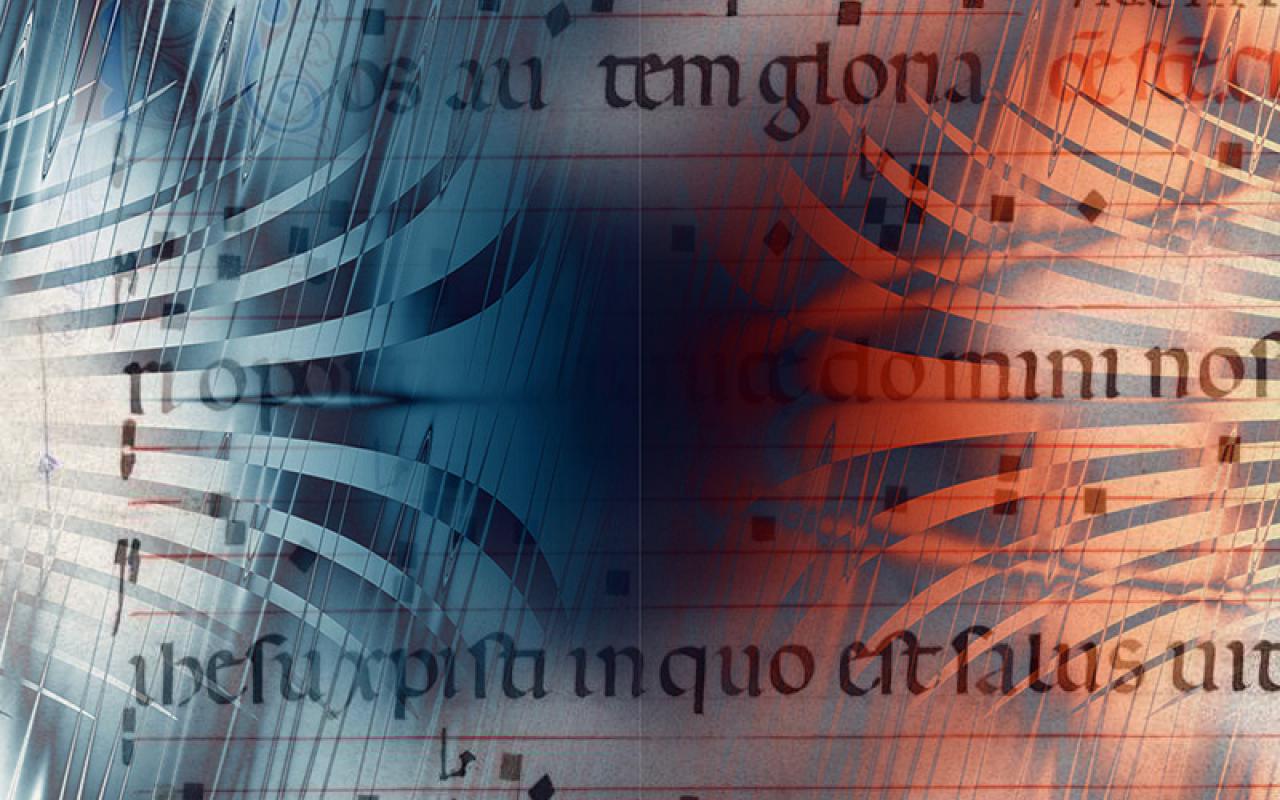
»Sounds Numbers Keyboard«: Concert and Lecture on Renaissance music and mathematics compared to New Music. With Achim Langenkämper, Reto Schölly and Martina Schettina.
The concert guitarist Achim Langenkämper will perform works of the Renaissance composer Luys de Narváez. Between the pieces, he will explain the techniques of composition and musical theoretical structures that were common at that time. Reto Schölly presents his method of graphically presenting the beauty hidden in mathematical terms. These and other images will be transformed into scores for computer music and made audible. Martina Schettina will give an introduction to the mathematics of the Renaissance. Her paintings, each of which is dedicated to a mathematical idea from this age of radical change, form the starting point for her argumentation.
In the 16th century, Europe was seized by an intellectual awakening, universities and book printing led to a spreading of accomplishments. In mathematics, for the first time, solution algorithms were found for the solution of algebraic equations for degrees three and four, the imaginary numbers were defined, and numerous applications provided inspiration for mathematic developments. In art, perspective was required, geometry was necessary for navigation, producing maps and astronomy, and music theory also demanded mathematic laws. Masters of calculation were highly esteemed. Accurate calculations were of immense importance for shipping, trade and the military.
Pythagoras believed that the will of the gods and the harmony of the universe dwelled in mathematics. As we have known since Max Bense at the latest, aesthetic information is contained in mathematical terms. So if formulae are transformed into images, then the beauty of the term is revealed even to those who have no liking for mathematics. From these images, melodies are generated, the regularity of which is based solely upon purely mathematical construction. This new music bears a striking resemblance to the old sounds from the era in which only a few rules had been formalised.
The Spanish composer Luys de Narváez published »Los seys Libros de Delphin«, which appeared in 1538, one of the first works of collected compositions of lute music, about 4 decades after the Arabian Moors were driven from his home city of Granada, and in the golden age of the Renaissance. The music of Narváez was thus also facing a new beginning. With little music-theoretical structure as yet – polyphony had only just been discovered for the instrument – people were searching for new forms of expression. This can be seen in particular in the many compositions which were written in the style of a fantasía. These lack rules, and instead a musical idea is played with in order to articulate it. A fantasía is a note-dotted improvisation, a miniature. In such pieces one can really find an origin of Western music, as it strives for spiritual content while still always showing an Arabian influence, as can be clearly heard with Narváez. The presentation, in the concert programme, of these miniatures in the form of a fantasía is intended to provide a contrast to the new music.